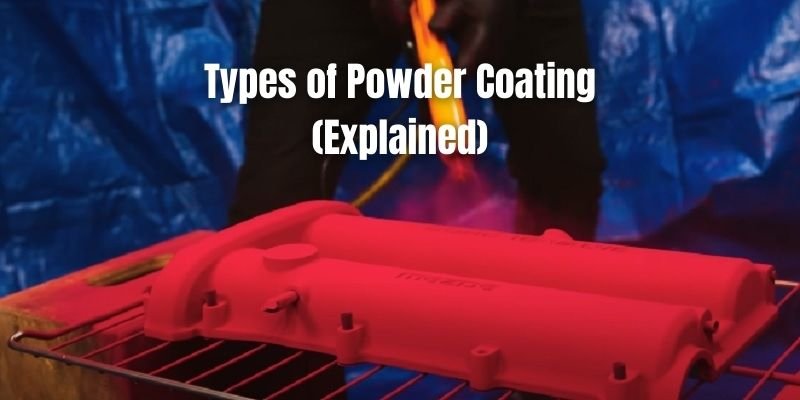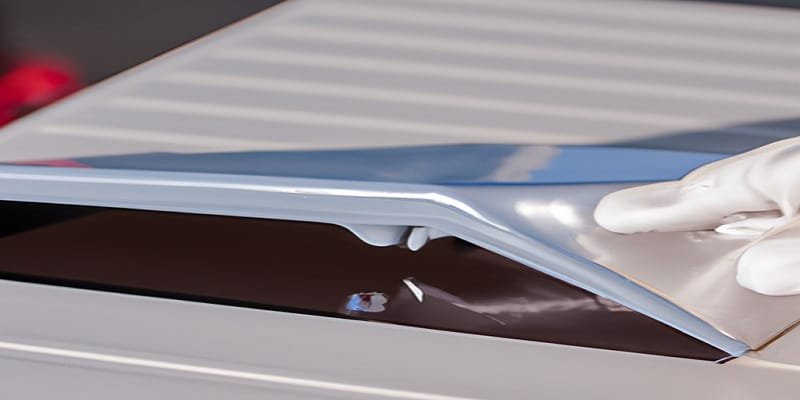Powder coatings have revolutionized the finishing industry with their durability, versatility, and eco-friendly attributes. They offer a protective and decorative finish to a wide range of products, from automotive parts to household appliances. In this guide, we will delve into the diverse range of Types of Powder Coatings available today.
We’ll also navigate through their subtypes, explore their applications, outline advantages and disadvantages, and decipher which type of powder coating suits different surfaces best.

Different Types of Powder Coating
We’ll delve into the diverse universe of powder coatings, categorizing them into three main types:
- Thermosets
- Thermoplastics
- UV-curable coatings.
By exploring their subtypes, understanding their unique features, and uncovering their suitability for different surfaces, we aim to provide a comprehensive resource for both enthusiasts and professionals.
1. Thermoset Powder Coatings
Thermoset powder coatings are the most common type of powder coatings. They are applied in a dry powder form and cured using heat. During the curing process, the powder particles chemically react to form a crosslinked network, resulting in a tough and durable finish. Thermoset coatings offer excellent resistance to heat, chemicals, and UV radiation, making them suitable for a wide range of applications.
Ideal for industries demanding reliability, such as automotive and industrial machinery.
Suitable Surfaces:
- Automotive parts
- Industrial machinery
- Appliances
- Indoor metal surfaces
- Wood surfaces (with caution)
- Limited suitability for plastic surfaces
This type includes several subtypes, each tailored for specific applications.
Epoxy Powder Coatings
Epoxy powder coatings are known for their exceptional adhesion and corrosion resistance. These coatings are often used in industries where durability is crucial, such as automotive and industrial machinery. The epoxy coating is electrostatically applied to the surface and then cured through heat. This type of coating is ideal for indoor applications and offers excellent chemical resistance.
Polyester Powder Coatings
Polyester powder coatings are popular for their UV resistance and vibrant color options. These coatings are widely used in architectural applications, such as magnesium wheels, outdoor furniture and building facades. Polyester coatings offer good weatherability and retain their color and gloss for an extended period, making them suitable for outdoor environments.
Polyurethane Powder Coatings
Polyurethane powder coatings provide exceptional durability, making them suitable for heavy-duty equipment and machinery. They offer resistance to abrasion, chemicals, and corrosion. Polyurethane coatings also have excellent flexibility, allowing them to withstand impacts and bending without cracking. This type of coating is commonly used in the automotive and aerospace industries.
Acrylic Powder Coatings
Acrylic powder coatings are known for their decorative finishes and color retention. They are often used for items that require an aesthetic appeal, such as signage, lighting fixtures, and consumer electronics. Acrylic coatings offer good UV resistance and are available in a wide range of colors and textures.
Texture Powder Coatings
Texture powder coatings are formulated to create textured or tactile surfaces. These coatings can mimic various textures, such as rough, matte, or textured patterns, providing both visual and tactile appeal.
Heat-Resistant Powder Coatings
While high-temperature resistant coatings were mentioned, there are also specialized heat-resistant powder coatings designed for extremely high temperatures, often used in industrial applications involving furnaces, engines, exhaust pipes and other high-heat environments. These coatings offer protection against heat-related damage and maintain their appearance under extreme conditions.
2. Thermoplastic Powder Coatings
Thermoplastic powder coatings, unlike thermosets, do not undergo a chemical reaction during curing. Instead, they melt and flow when heated, and they solidify upon cooling. This means they can be re-melted and re-coated, which can be an advantage in certain applications. Thermoplastic coatings are known for their flexibility, impact resistance, and excellent adhesion.
With their flexibility and ease of application, thermoplastic coatings are adaptable and repairable. Perfect for surfaces requiring impact resistance and flexibility.
Suitable Surfaces:
- Metal surfaces
- Wood surfaces (with caution)
- Plastic surfaces
- Outdoor furniture
- Playground equipment
- Automotive components
- Surfaces prone to impact and flexing
This type includes various subtypes with distinct properties.
Hybrid Powder Coatings
Hybrid powder coatings combine the characteristics of different resin types to achieve specific performance attributes. For instance, a hybrid coating may combine the durability of epoxy with the weather resistance of polyester. These coatings are versatile and can be tailored to meet specific requirements, making them suitable for various applications.
Metallic Powder Coatings
Metallic powder coatings contain metallic pigments that create a shimmering and reflective finish. They are used to achieve a metallic look on items such as automotive parts, bicycles, and decorative pieces. Metallic coatings add a touch of luxury and uniqueness to the coated items.
Antibacterial Powder Coatings
Antibacterial powder coatings have gained prominence due to their ability to inhibit the growth of bacteria on coated surfaces. These coatings find applications in healthcare facilities, food processing units, and public spaces where hygiene is a top priority. They contribute to maintaining a clean and sterile environment.
Clear Coat Powder Coatings
Clear coat powder coatings are transparent coatings used to protect the underlying substrate while maintaining its natural appearance. They are often applied over decorative finishes to provide an additional layer of protection against UV radiation, chemicals, and abrasion.
Low-Cure Powder Coatings
Low-cure powder coatings are formulated to cure at lower temperatures, which helps reduce energy consumption during the coating process. They are eco-friendly and can be used on heat-sensitive materials. Low-cure coatings offer good adhesion and corrosion resistance while minimizing the carbon footprint.
3. UV-Curable Powder Coatings
UV-curable powder coatings are a relatively newer development in the powder coating industry. These coatings are cured using ultraviolet (UV) light rather than heat. UV light triggers a photochemical reaction that rapidly hardens the coating. UV-curable coatings offer the advantage of instant curing, which can lead to increased efficiency in the coating process. They also tend to have lower energy consumption compared to traditional heat-cured coatings.
Suitable Surfaces:
- Electronics
- Automotive components
- Metal surfaces with intricate designs
- Limited suitability for wood and plastic surfaces
- Surfaces requiring fast production turnaround
Conclusion
Selecting the right type of powder coating for different surfaces is crucial to achieving the desired aesthetic and functional results. Whether you’re working with metal, wood, or plastic, understanding the compatibility of powder coating types with each material will help you make informed decisions and contribute to creating durable and visually appealing products.


